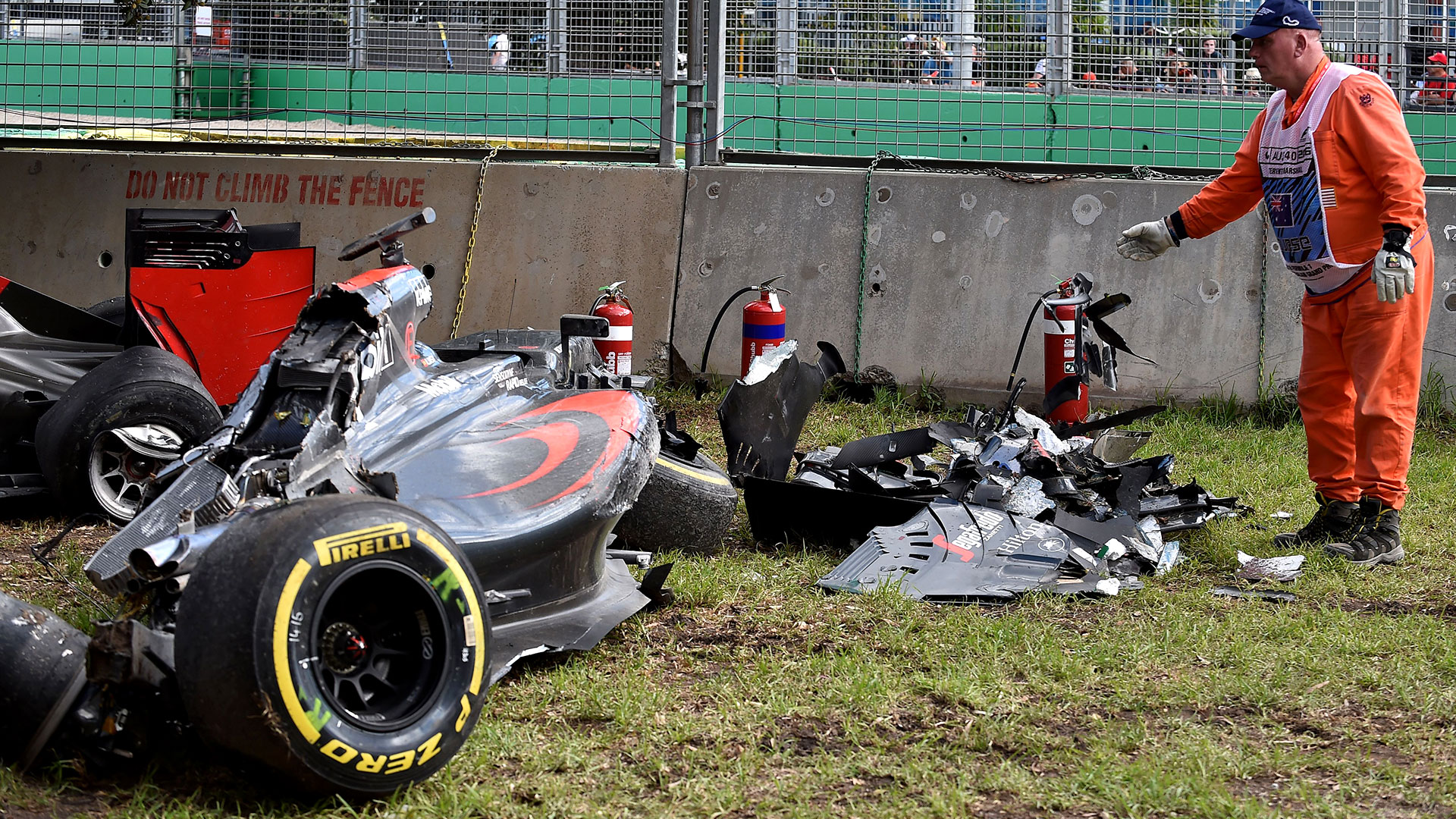

Fun fact: F-16 pilots have to deal with as much as nine times the force of gravity pressing down on them during tight turns. But as insane as that sounds, it’s nothing compared to the stress exerted on Fernando Alonso’s teeny-tiny body during his pinwheeling crash at the Australian Grand Prix on March 20. New reports suggest Fernando Alonso may have experienced forces exceeding 46G’s in the midst of the accident.
According to a report in Italy’s Corriere Della Sera, Alonso’s carbon-fiber throne cracked in the general vicinity of his shoulders, suggesting the seat—and the world champion driver sitting in it—was dealing with forces around 46 times that of Earth’s gravity. If that’s tough to understand in the abstract, think of it this way. For the brief moment he was subjected to that amount of force, the 150-pound Alonso’s body would have weighed nearly three and a half tons. (Which, incidentally, would have made him too heavy to cross the Brooklyn Bridge.)
The FIA has kicked off an investigation into the crash and will reportedly take full advantage of the high-speed on-board cameras made standard for the 2016 season to try to determine what went wrong. The camera captures footage of the driver at 400 frames per second, which will enable safety analysts to determine exactly how much Alonso’s neck was stretched when he slammed against Esteban Gutierrez’s Haas F1 car and flew into the gravel trap.
Alonso, in spite of the massive pressure momentarily placed on his minuscule frame, walked away almost unharmed from the accident. According to the champ’s Twitter feed, however, he’s been suffering from insomnia and headaches in the days since the crash. We can’t say were shocked. The man did briefly weigh as much as a Ford F-250.